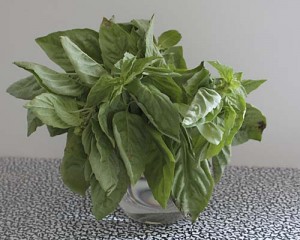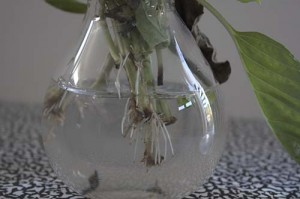Orchids can be finicky creatures, especially when you try to grow species that aren’t adapted to your growing conditions. If you’re lucky enough to live in an area with infrequent freezing temperatures (the warm end of zone 9B or in zone 10 or higher), many of the reed-stemmed epidendrums can be as easy to grow as anything in the garden and can be as inexpensive as most other plants. But these also make easy houseplants if you have a nice south-facing window.
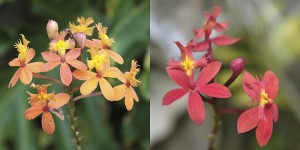 If they bear more than a passing resemblance to the flashy florist cattleya orchids it’s no coincidence–They’re closely related members of the Cattleya alliance of orchids.
If they bear more than a passing resemblance to the flashy florist cattleya orchids it’s no coincidence–They’re closely related members of the Cattleya alliance of orchids.
The parent species for these plants originate in Central America, where they can sometimes be seen growing rampantly. Epidendrum radicans and E. ibaguense are tough and prolific, and will tolerate temperatures down to the high 20s.
To get the species themselves, you’ll have to go to an orchid nursery, but their hybrids can be had in many good garden centers or nurseries. Colors come in everything from the parent species’ orange and red, to pink, salmon, rose, purple, lavender and white. The plants bloom almost the year round and will grow two to five feet tall, depending on light and watering. They all make great starter orchids or good plants to use for landscaping.
Light
Epidendrums are happiest in bright light, from dappled shade to several hours of full sun. They will survive in full sun, but the plants will be short, and the leaves may scorch on the hottest days. They’ll also grow in heavy shade, but the plants will grow tall, and you won’t see any flowers.
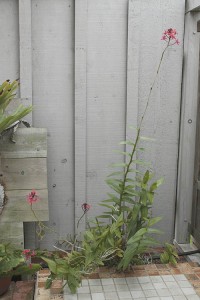 This is an example of plant that has been grown in fairly deep shade. The plant grows big, loose and floppy, and it only flowers on the stems that receive some direct sun.
This is an example of plant that has been grown in fairly deep shade. The plant grows big, loose and floppy, and it only flowers on the stems that receive some direct sun.
Water
Low to moderate garden water is a good starting point for these epidendrums. They will tolerate quite moist conditions, and they can be surprisingly drought tolerant. But they look best somewhere in between.
Soil
You can grown these in special orchid mixes if you like, but mine have been happy stuck into average-to-sandy garden dirt. Plants grown in orchid mixes will require more watering. Any loose potting mix would work well for plants in pots.
Propagation
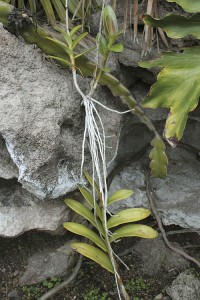 Flowering stems, when they reach the end of their flowering life, usually produce new plants near their tips. Orchid growers call these keikis, Hawaiian for “babies.” These little plants will send out long white roots before long. Cut the rooted keikis off when the roots are two to four inches long and stick them where you’d like another plant, being careful not to break the brittle roots. The plants will often start blooming within a year. Additionally, epidendrums can be dug up and divided every few years.
Flowering stems, when they reach the end of their flowering life, usually produce new plants near their tips. Orchid growers call these keikis, Hawaiian for “babies.” These little plants will send out long white roots before long. Cut the rooted keikis off when the roots are two to four inches long and stick them where you’d like another plant, being careful not to break the brittle roots. The plants will often start blooming within a year. Additionally, epidendrums can be dug up and divided every few years.
If you get deeper into epidendrum species, you’ll also find species with brown, green and almost-blue flowers, some of them bicolors, some of them with outrageous spotting. If you have the collector gene in your DNA, you’ll find 1500 species to choose from. These specialty epidendrums don’t necessarily have the same lust for life and tolerance for cool temperatures as the common reedstems do, so be sure to do some research before sticking them in a garden bed with your perennials.

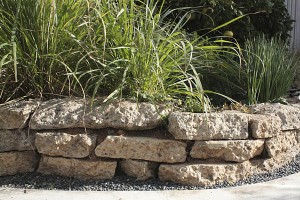

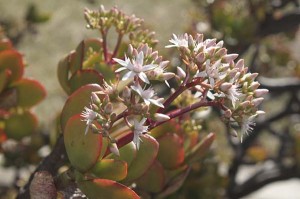
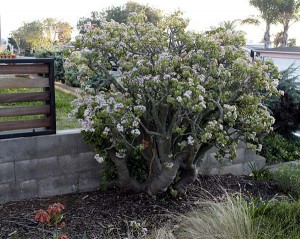
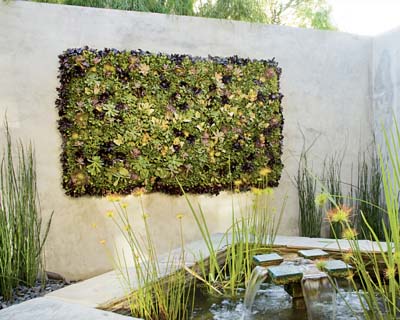

 Mary Catherine Newcomb. Molded eggplant from Product of Eden [
Mary Catherine Newcomb. Molded eggplant from Product of Eden [ 

